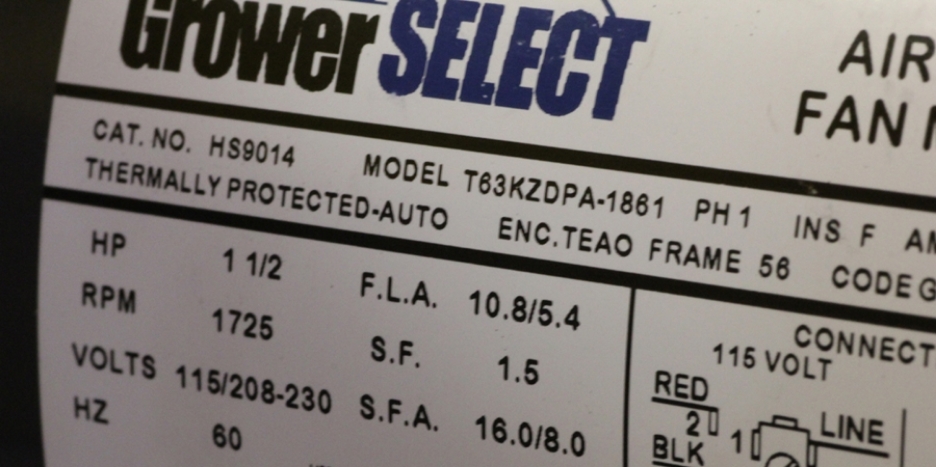Livestock and poultry operations subject electric motors to very hostile work environments. Those environments alternate between dusty and humid, along with fluctuations in voltage and changing workloads.
When selecting replacement motors, it is important to choose motors that are energy efficient and designed with a built-in "safety factor" that allows them to last under harsh conditions.
While Service Factor or S.F. may be a familiar term., there are a couple of important designations found on a motor nameplate that may need more clarification.
Service Factor is the motor's ability to operate under an increased short-term load. The higher a motor's S.F. rating is the more durable the motor. To illustrate, a 1-1/2 hp motor with a 1.5 S.F. can provide 2.25 hp of power for a short period. However, it is not good to continuously operate a motor above the rated workload. For example, it would not be a good idea to use the same 1-1/2 hp, 1.5 S.F. motor to replace a 60" fan initially designed to operate with a two hp motor.
Full Load Amps, or F.L.A., represents the amount of current the motor will draw at its rated horsepower. In the example nameplate, when operating at a full load at 230 volts, we can expect it to draw 5.4 amps. When choosing between two motors with the same horsepower, a lower F.L.A. is more efficient.
Service Factor Amps, or S.F.A., represents the current the motor will draw when running at its full Service Factor. In the example nameplate, the S.F.A. is eight amps at 230 volts. Continually exceeding the S.F.A. shown on the nameplate can shorten motor life. Motors with a higher S.F.A. have an increased "safety factor" to last longer under harsh conditions.
The most efficient, rugged motors have higher S.F., lower F.L.A., and higher S.F.A. ratings. By comparing the information on a motor nameplate, we can select the best replacement motors for a farm's feeding and ventilation equipment.
For more information, see GrowerSELECT replacement motors.












 Україна
Україна Méjico
Méjico



